Appealing to the Senses
Whether you prefer a bustling coffee shop or a quiet, private room, NC State University Libraries’ sensory-friendly maps can help you find the perfect place to study or get work done.
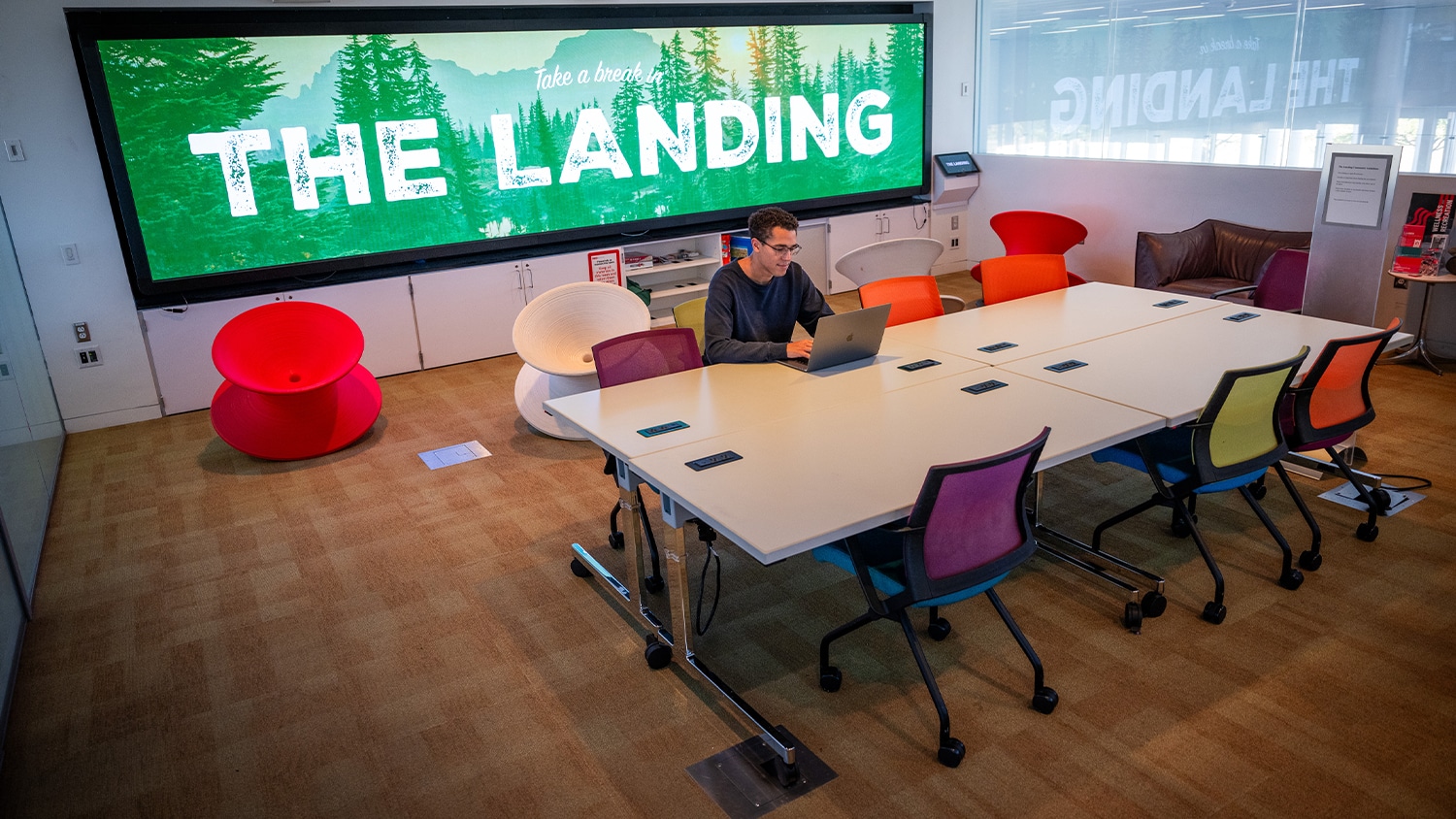
When it comes to the perfect study spot, Divija Shringarpure (M.S. Computer Engineering ’25) enjoys quiet, naturally-lit spaces that feel cozy. If she is working in the D.H. Hill Jr. Library, she likes the couch cubicles on the 8th and 9th floor and the feeling of inspiration that comes from being between the book stacks. She also enjoys the Quiet Reading Room for the comfy seating and the “Harry Potter vibes.”
However, her go-to spot is the Skyline Reading Area in the James B. Hunt Jr. Library.
“It’s super quiet, and the view through the glass windows overlooking the lake is the best,” Shringarpure said. “If I wish to have some light conversation while I work, I choose the balcony, especially during the sunsets. The fresh air and awesome view help me get a clear mind.”
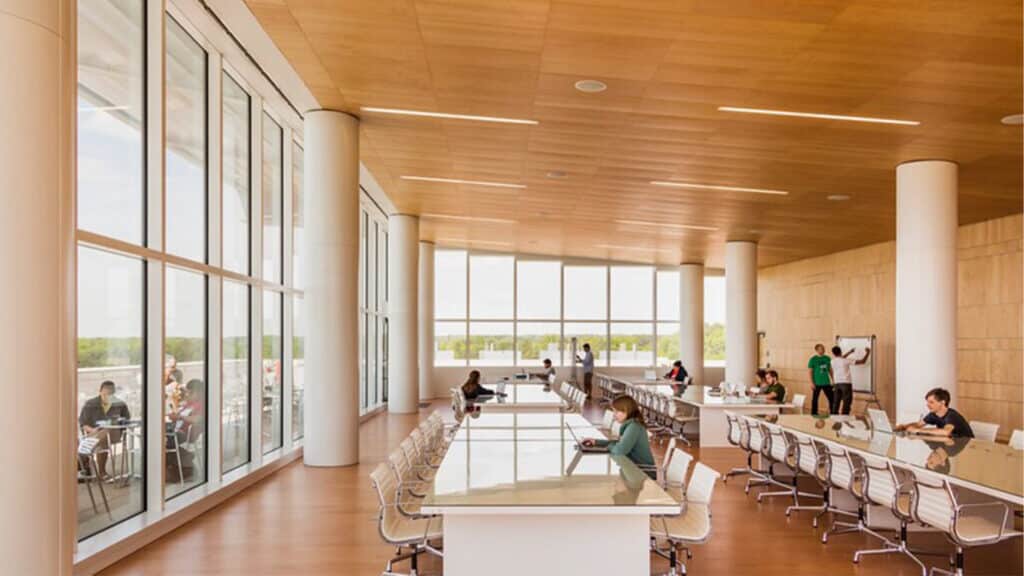
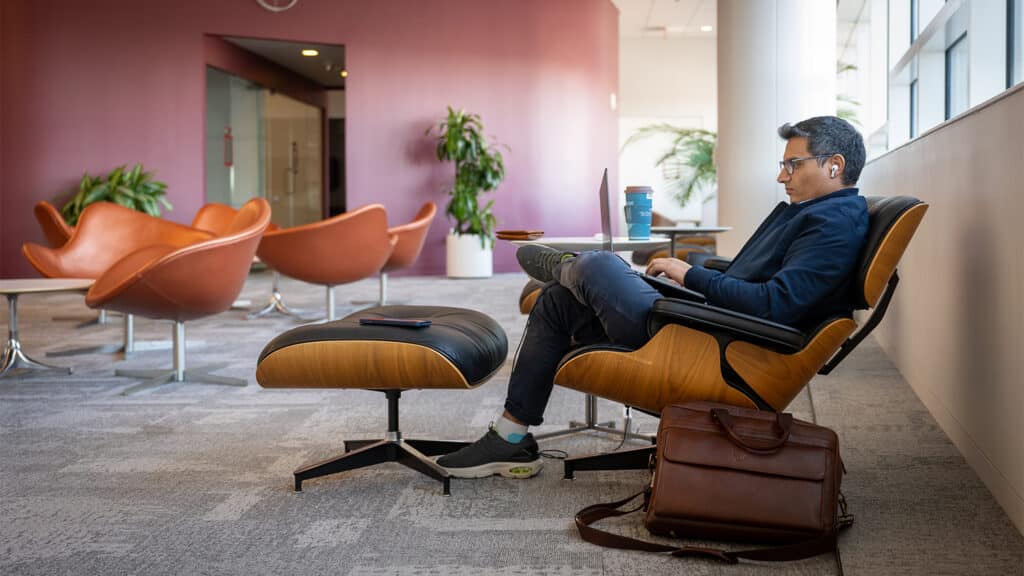
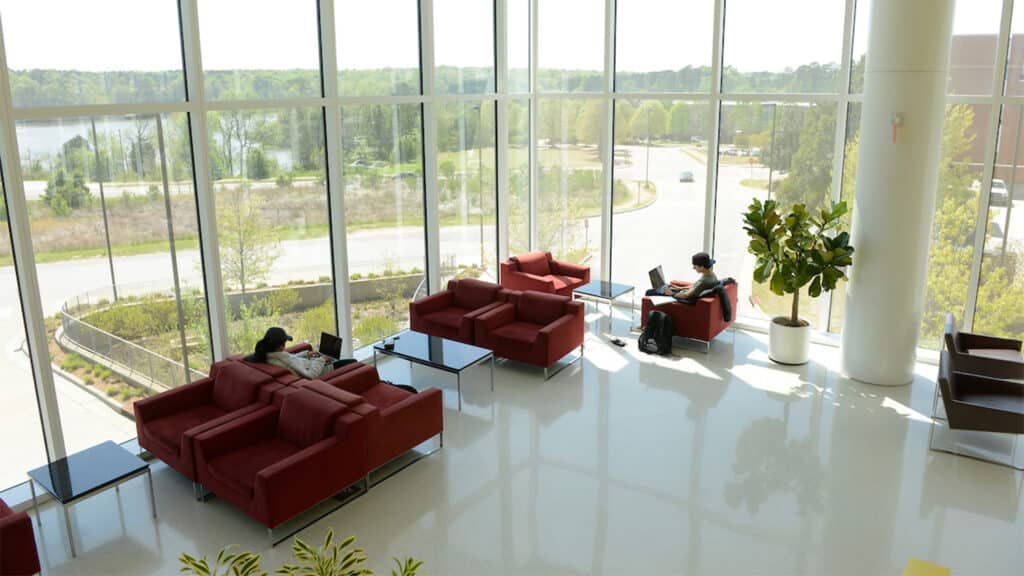
Besides some exploration on her own, Shringarpure has used the NC State University Libraries’ sensory-friendly maps to help her identify spaces that give her the aesthetic that best fits her work style. This tool allows all campus library visitors to explore hundreds of different locations in NC State’s libraries and filter them by sound, lighting, crowdedness and more. There are also more than 120 private study rooms that can be reserved for individuals or groups — a popular option for students who want to study for finals with their friends. Each study room contains a wall panel with controls that can be used to adjust lighting or play white noise to mask outside sound.
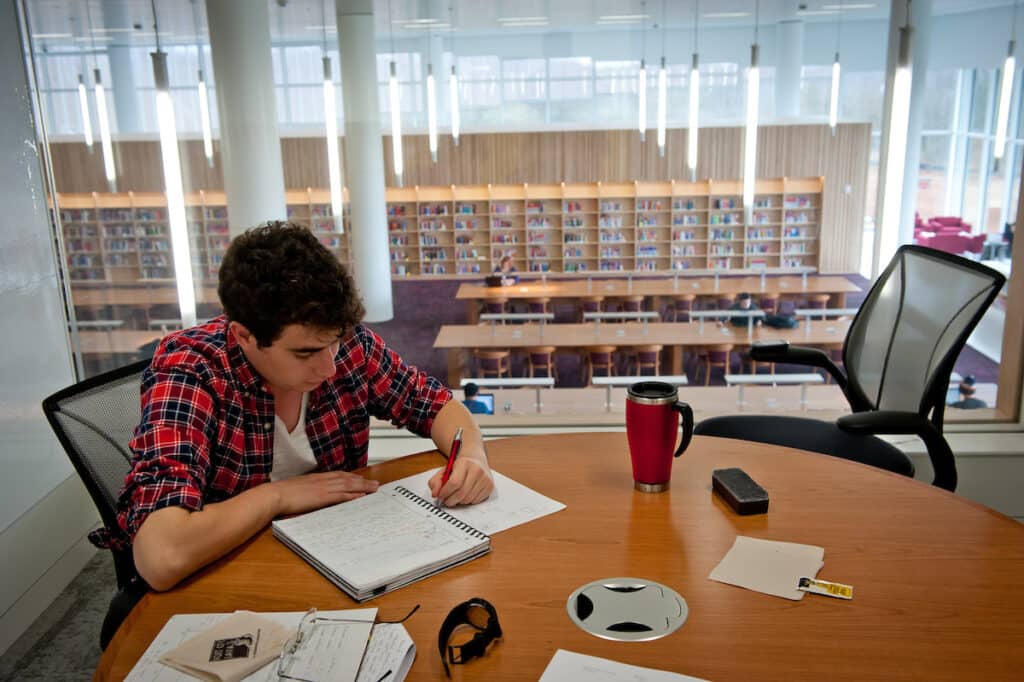
Robin Davis, associate head of the user experience department within the Libraries, noted that sensory-friendly maps are primarily intended for autistic students and other library patrons who prefer workspaces that help them avoid crowds, noise or distractions. The maps can also help people with other sensory needs. People with frequent migraines can use the tool to avoid rooms with harsh overhead lighting, for example.
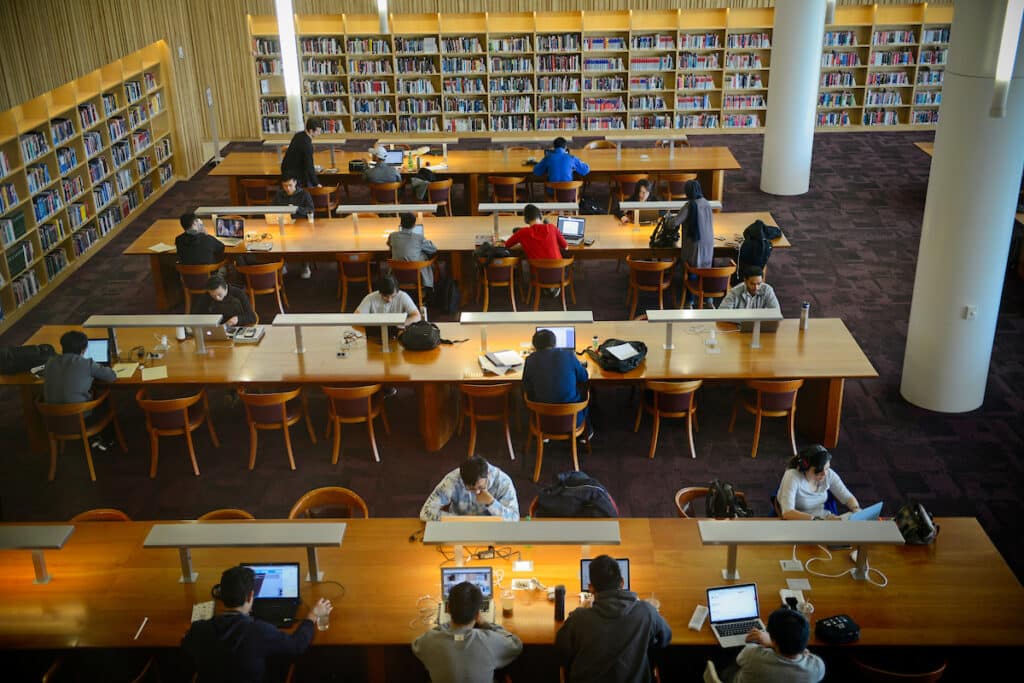
“There’s been a growing amount of research about neurodiversity that is showing that many of us have sensory needs that we might not even know about ourselves,” Davis said. “As a campus, and especially at the Libraries, we’ve been focusing on accessibility as a way to make our services more equitable for students who have disabilities and students who are neurodiverse.”
These spaces aren’t just for students. Faculty and staff who desire a change of scenery or need a quiet place for distraction-free work have access to almost every room in the libraries. One of The Faculty Research Commons in Hill and Hunt libraries are a couple of the most popular gathering places for employees.
A Work of Art
The idea to bring sensory-friendly maps to NC State came from former Libraries Fellow Katharine Frazier, who was inspired by similar technology at the Metropolitan Museum of Art in New York City. The user experience team started the project by visiting every room in Hill and Hunt libraries and noting their observations about the lighting, noise level and crowdedness. Next, former student worker Beck Buss (Graphic Design ’22) worked with the Libraries’ communications team to draft and fine-tune the maps for print and digital use.
Charles Samuels, creative director for Libraries Communications, oversaw the project and appreciated the opportunity for collaboration.
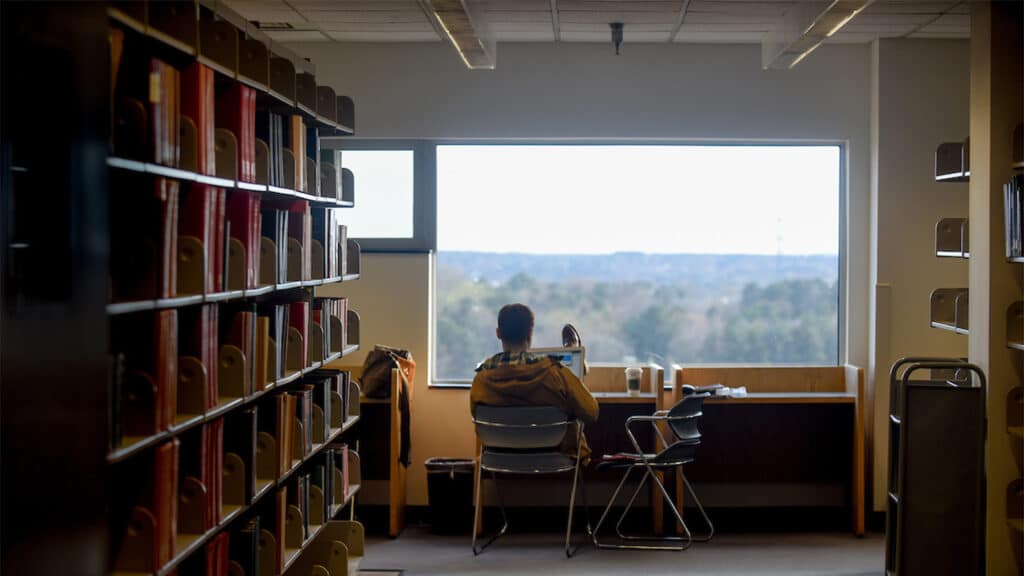
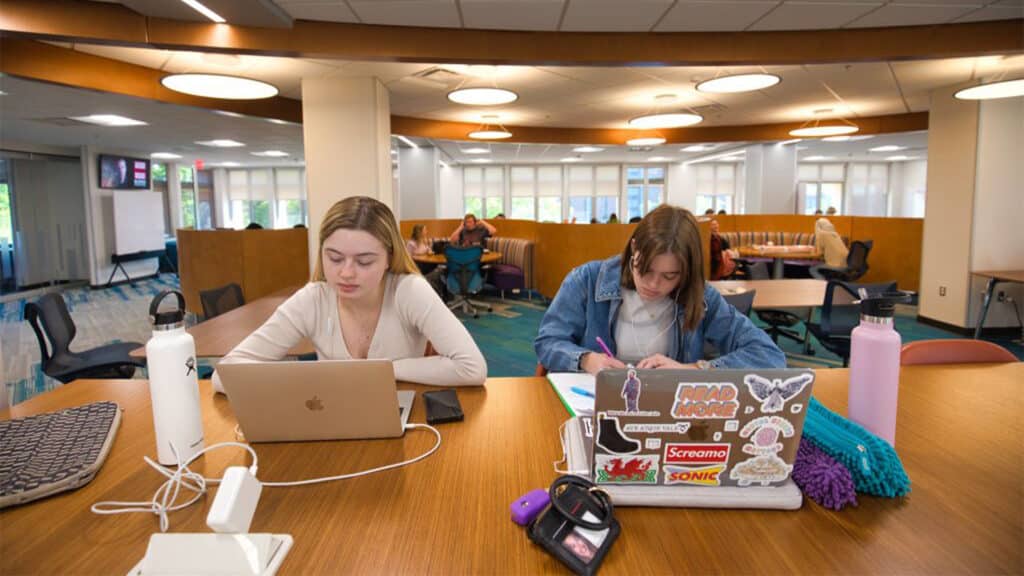
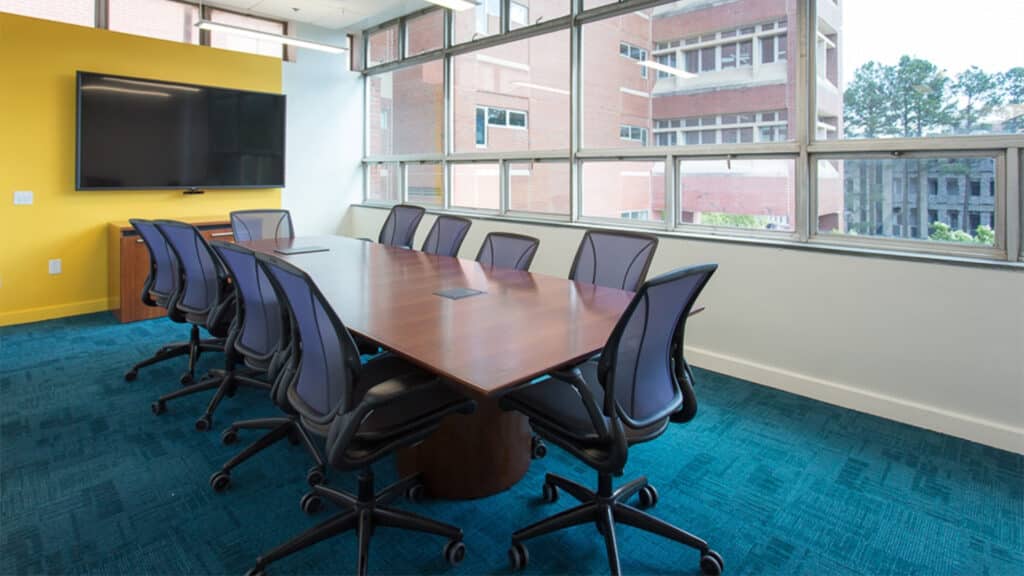
“I have always been a fan of not only the great work that our student assistants do for us here at the Libraries, but also the opportunity that projects like these allow them to get some experience in a real-world setting — especially when they get to see their work in print and used by their classmates across campus,” Samuels said. “I am so grateful to our colleagues at the Libraries and how we all work together to make the spaces, services and collections accessible and available to everyone on campus. And our student assistants are such a big part of this.”
University Libraries plans to continue developing its maps and making them as useful as possible to the campus community, and feedback is welcome and encouraged. If you have any feedback or further questions about sensory-friendly spaces, visit https://www.lib.ncsu.edu/askus.
- Categories:


